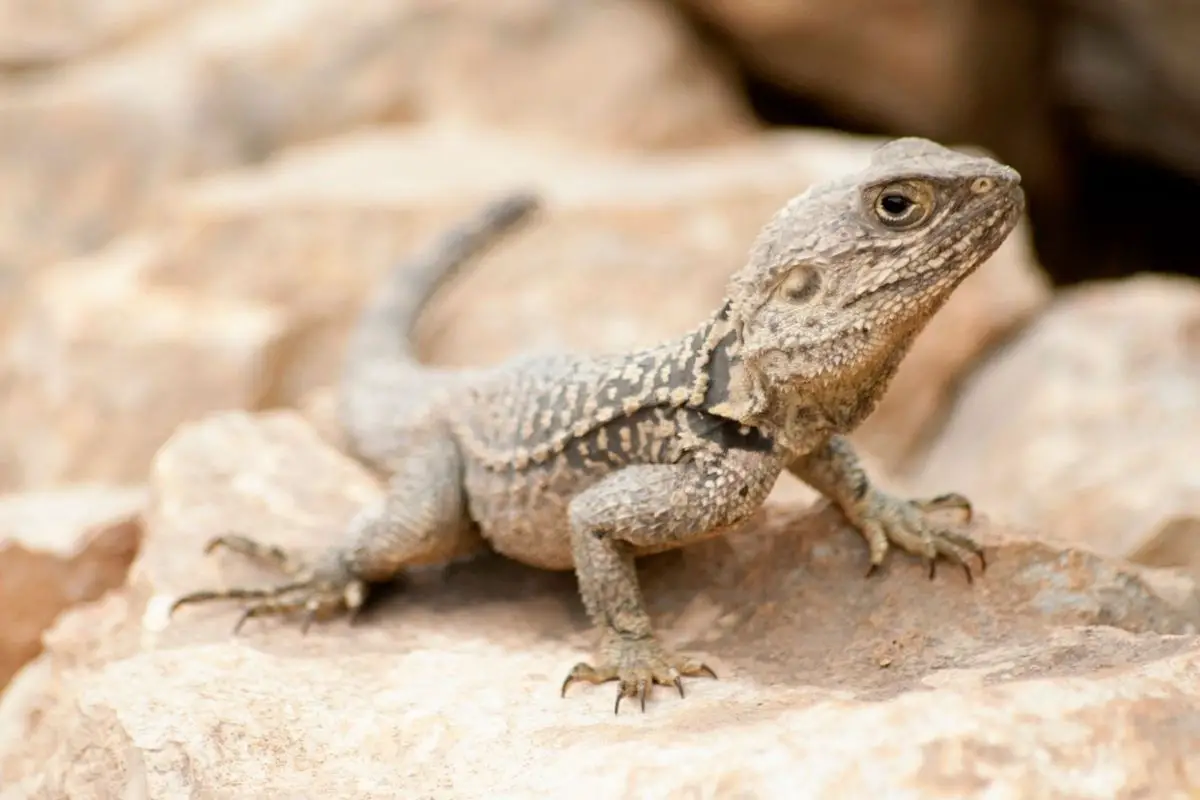
Lizards are some of the most fascinating and diverse creatures on Earth. They come in all shapes, sizes, colors, and even live in a range of habitats from deserts to rainforests. But many people don’t know about these amazing animals because they think lizards are just small snakes or slow-moving slugs that only exist in hot climates.
In reality, there are over 4500 species of lizards worldwide, and they come in a variety of colors, patterns, and sizes. Some can even change color to hide from predators by matching their surroundings! Here are ten of the most interesting and coolest types of lizards you should know about:
1. Gila Monster
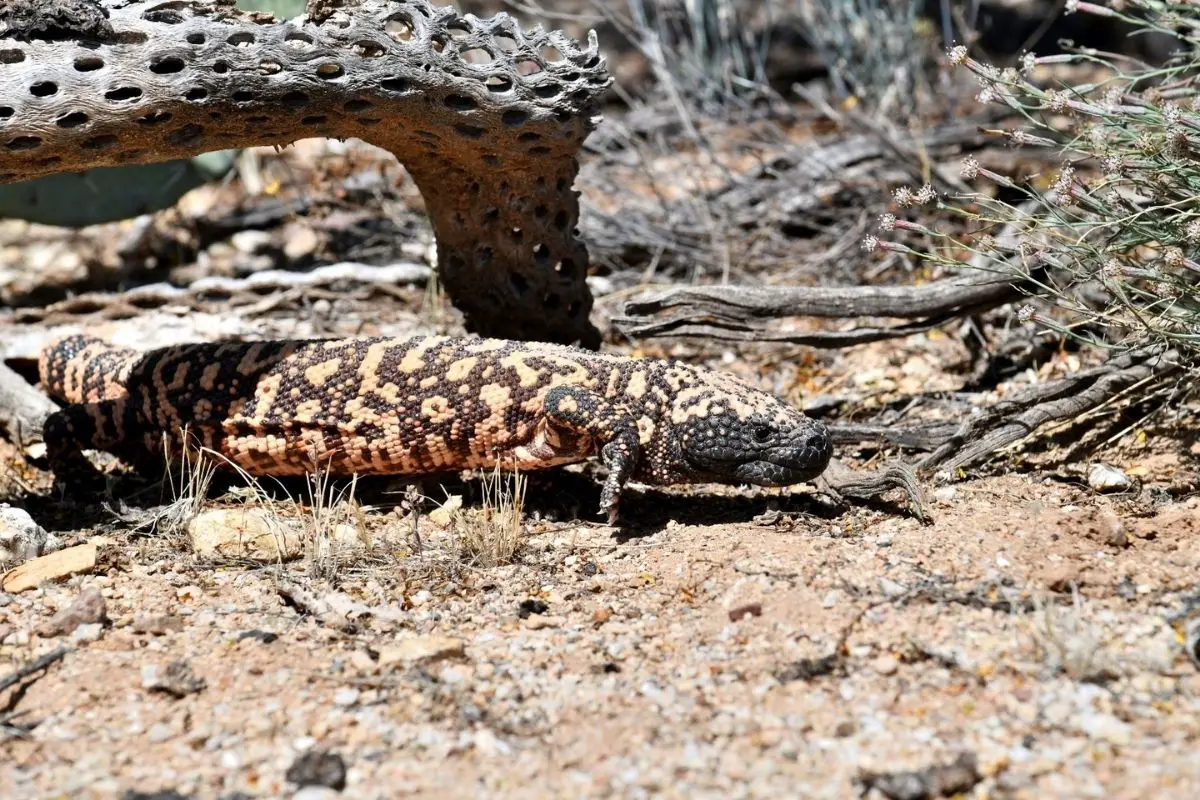
The Gila Monster is a large, venomous lizard that is native to the southwestern United States and Mexico. Gila monsters are able to grow up to around 2 feet (24 inches) long! They have a very slow metabolism which allows them to go long periods of time without food, and they primarily eat small mammals and birds.
Where it lives:
Southwestern US and Mexico
What it eats / how often it eats:
Small mammals and birds / Once every 2-3 weeks
How it gets food:
According to the Sandiego Zoo, Gila monsters use their long, forked tongues to sense the scent of prey. When they find an animal, they ambush it and bite down hard, injecting their venom into the prey. The Gila monster then releases its grip, and the prey usually dies within an hour due to the paralysis caused by the venom.
How long it lives:
20-30 years
Sleep behavior:
Gila monsters are nocturnal, meaning they are most active at night. During the day, they find a cool, dark place to hide from the heat and sun.
Types of homes it has:
Gila monsters live in a variety of habitats, including deserts, foothills, and woodlands. They prefer areas with lots of rocks and crevices where they can hide from predators and the heat.
Nomadic vs. territorial:
Gila monsters are not very nomadic, meaning they generally stay in the same area for their entire lives. They are, however, territorial and will defend their territory from other Gila monsters.
Fun Fact:
The Gila monster’s venom is not fatal to humans, but it can be very painful. These lizards have been known to bite people who try to handle them, and their bites can cause intense pain, swelling, and nausea.
2. Green Iguana
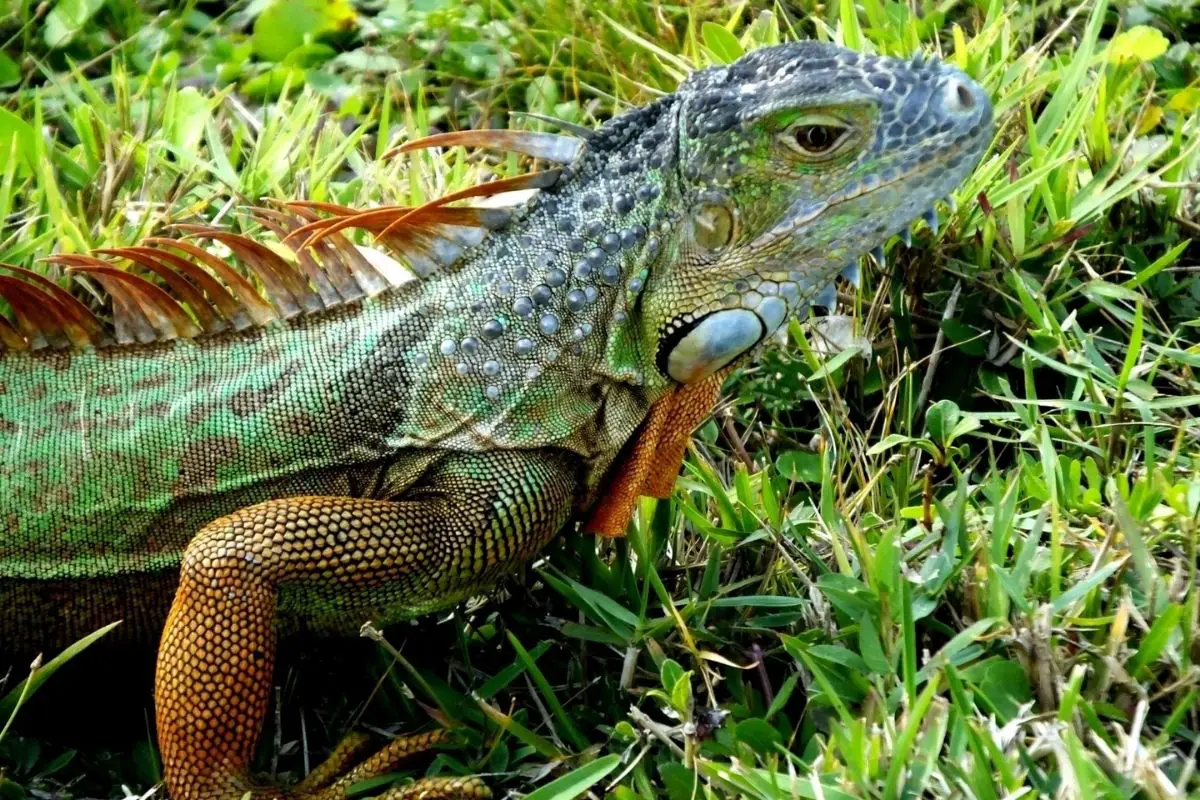
The Green Iguana is a big, strong, tree-dwelling lizard that is native to South and Central America. These lizards can grow up to 6 feet in length and are one of the most popular pet lizards in the world. They are herbivores and eat a diet of leaves, fruits, and flowers.
Where it lives:
South and Central America
What it eats / how often it eats:
Leaves, vines, fruits, and flowers / Once a day
How it gets food:
Green iguanas use their sharp claws and teeth to tear off leaves and fruits from trees. They then chew the food with their powerful jaws before swallowing it.
How long it lives:
20 years
Sleep behavior:
Green iguanas are diurnal, meaning they are most active during the day. They spend the night in trees or burrows and often bask in the sun to regulate their body temperature.
Types of homes it has:
Green iguanas live in a variety of habitats, including rainforests, swamps, and woodlands. They prefer areas with lots of trees and vegetation where they can find food and hide from predators. These areas are usually very close to water.
Nomadic vs. territorial:
Green iguanas are not very nomadic, meaning they generally stay in the same area for their entire lives. They are, however, territorial and will defend their territory from other green iguanas.
Fun Fact:
When they are in danger of being caught by the tail, green iguanas can detach it and then grow another one!
3. Komodo Dragon
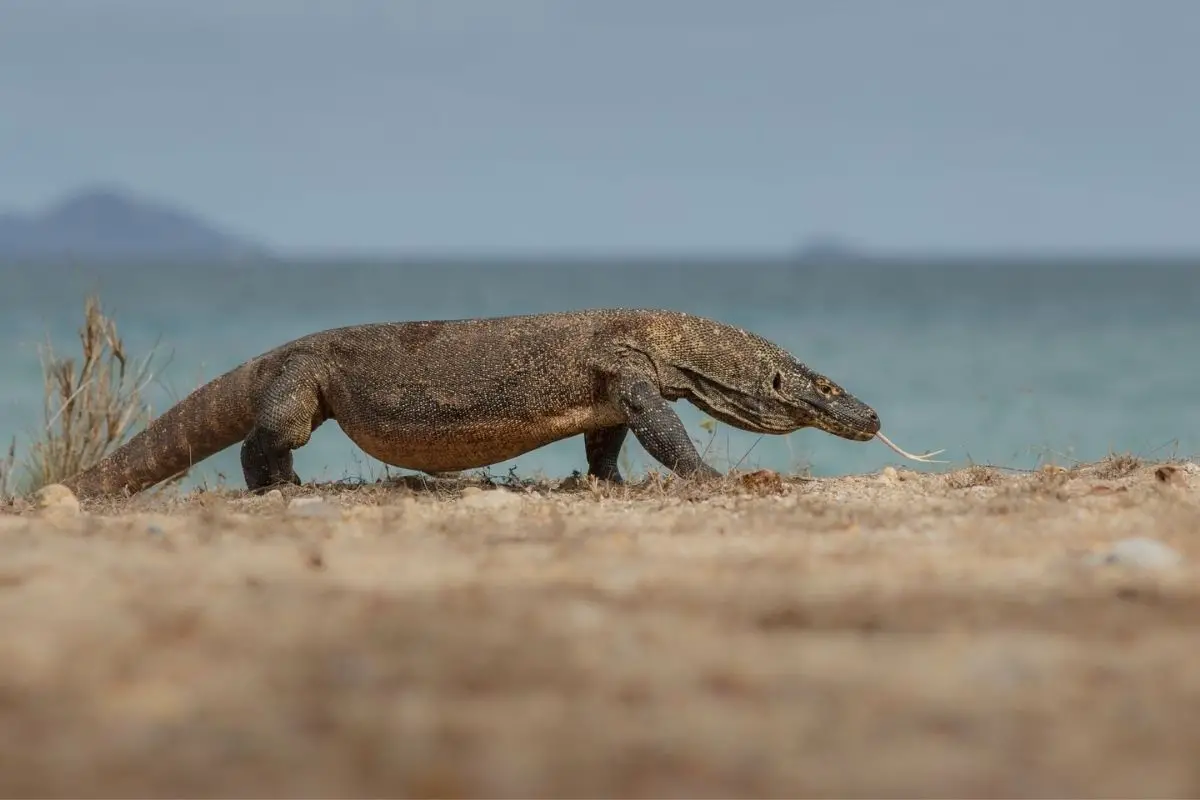
According to LiveScience.com, The Komodo Dragon is the largest lizard in the world and is native to the Indonesian island of Komodo. Komodo Dragons are massive, growing up to 10 feet in length and weigh up to 200 pounds! They are carnivores and primarily eat carrion, but they will also hunt and eat small mammals and birds.
Where it lives:
The Indonesian island of Komodo
What it eats / how often it eats:
Carrion, small mammals, and birds / As little as once a month
How it gets food:
Komodo dragons use their sharp claws and teeth to tear apart their prey. They then swallow the meat whole.
How long it lives:
20-30 years
Sleep behavior:
Komodo dragons are diurnal, meaning they are most active during the day. They spend the night in trees or burrows and often bask in the sun to regulate their body temperature.
Types of homes it has:
Komodo dragons live in various kinds of habitats, including rainforests, savannas, and woodlands. They prefer areas with lots of prey and places to hide from predators.
Nomadic vs. territorial:
Komodo dragons are not very nomadic, meaning they generally stay in the same area for their entire lives. They are, however, territorial and will defend their territory from other Komodo dragons.
Fun Fact:
Komodo dragons have a very long tongue that they use to detect their prey from far away!
4. Leopard Gecko
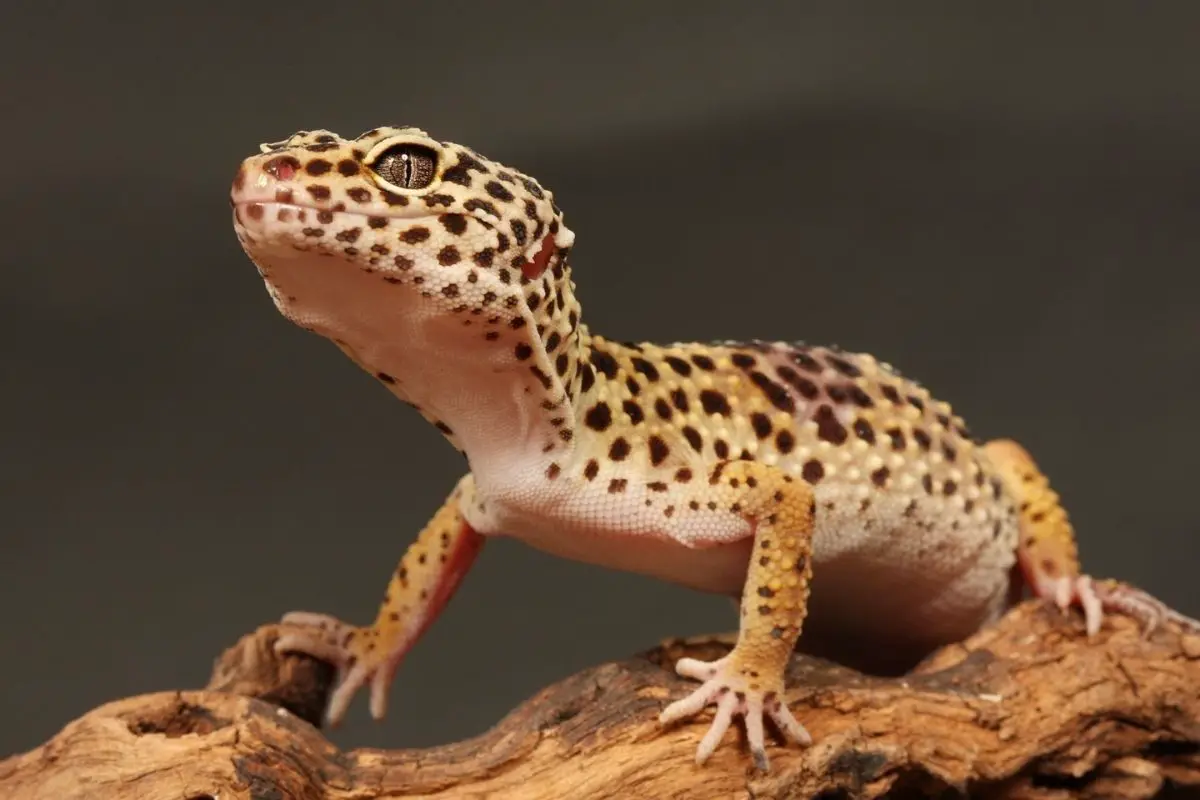
The Leopard Gecko is a small, ground reptile that is native to the Middle East. These lizards only grow to be about 8 inches in length and are one of the most popular pet lizards in the world. Leopard Geckos are omnivores and eat a diet of insects, small mammals, and plants.
Where it lives:
The Middle East and Southern Asia
What it eats / how often it eats:
Insects, small mammals, and plants / 2-3 times a week
How it gets food:
Leopard geckos use their sharp claws and teeth to catch and eat their prey. They also lick their food off of the ground.
How long it lives:
20 years
Sleep behavior:
Leopard geckos are nocturnal, meaning they are most active at night. They spend the day in burrows or hiding places and come out to hunt for food once the sun goes down.
Types of homes it has:
Leopard geckos live in dry environments such as deserts and rocky areas.
Nomadic vs. territorial:
Leopard geckos are not very nomadic, meaning they generally stay in the same area for their entire lives. They are, however, territorial and will defend their territory from other leopard geckos.
Fun Fact:
Leopard geckos can lose their tail if it is grabbed by a predator. Their tails will grow back, but they will be shorter and have a different pattern than the original tail.
5. The Bearded Dragon
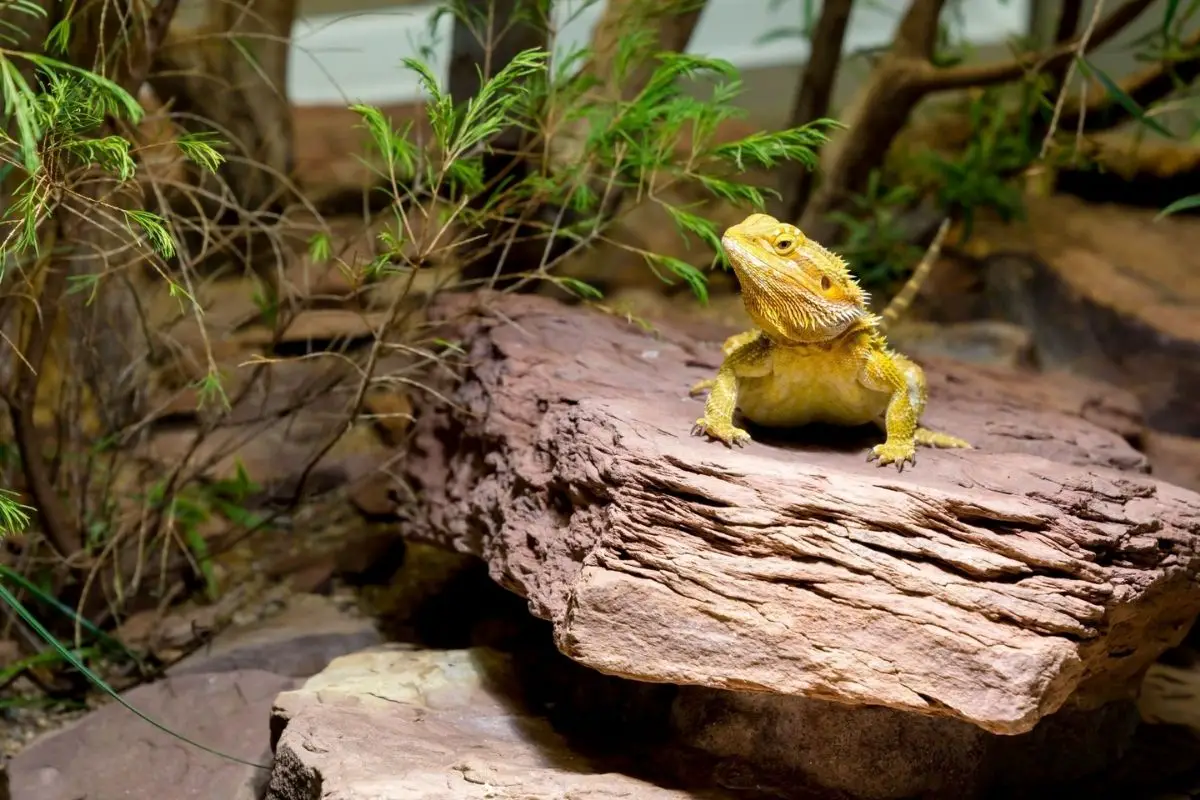
The Bearded Dragon is a medium-sized, desert-dwelling lizard that is native to Australia. Bearded Dragons are known to grow up to 2 feet in length and are popular pet lizards because of their docile nature. They are omnivores which means they generally eat a diet of insects, small mammals, and plants.
Where it lives:
Australia
What it eats / how often it eats:
Insects, small mammals, and plants / 2-3 times a week
How it gets food:
Bearded dragons use their sharp claws and teeth to catch and eat their prey. They also lick their food off of the ground.
How long it lives:
10 years
Sleep behavior:
Bearded dragons are diurnal.
Types of homes it has:
Bearded dragons live in dry environments such as deserts and rocky areas.
Nomadic vs. territorial:
Bearded dragons are not very nomadic, meaning they generally stay in the same area for their entire lives. They are, however, territorial and will defend their territory from other bearded dragons.
Fun Fact:
Bearded dragons can change the color of their skin to match their surroundings. This helps them to camouflage themselves and avoid predators.
6. Blue-Tongued Skink
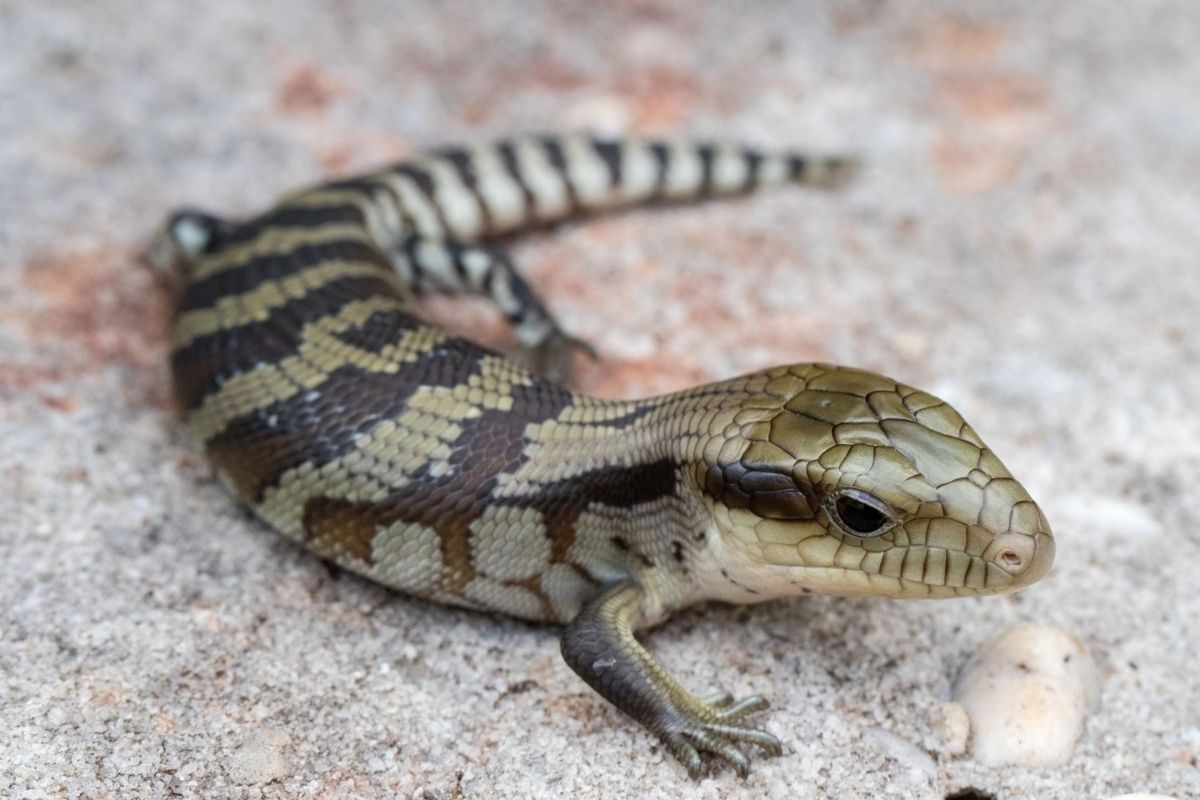
The Blue-Tongued Skink is a large, ground-dwelling lizard that is native to Australia and Indonesia. Blue-Tongued Skinks generally reach about 2 feet in length and are known for their blue tongues. They are omnivores.
Where it lives:
Australia and Indonesia
What it eats / how often it eats:
Insects, small mammals, and plants / 2-3 times a week
How it gets food:
Blue-tongued skinks use their sharp claws and teeth to catch and eat their prey. They also lick their food off of the ground.
How long it lives:
20 years
Sleep behavior:
Blue-tongued skinks are diurnal.
Types of homes it has:
Blue-tongued skinks live in dry environments such as deserts and rocky areas.
Nomadic vs. territorial:
Blue-tongued skinks are territorial creatures.
Fun Fact:
When blue-tongued skinks are threatened, they will sometimes open their mouth and stick out their tongue in an attempt to intimidate the predator.
7. Chuckwalla
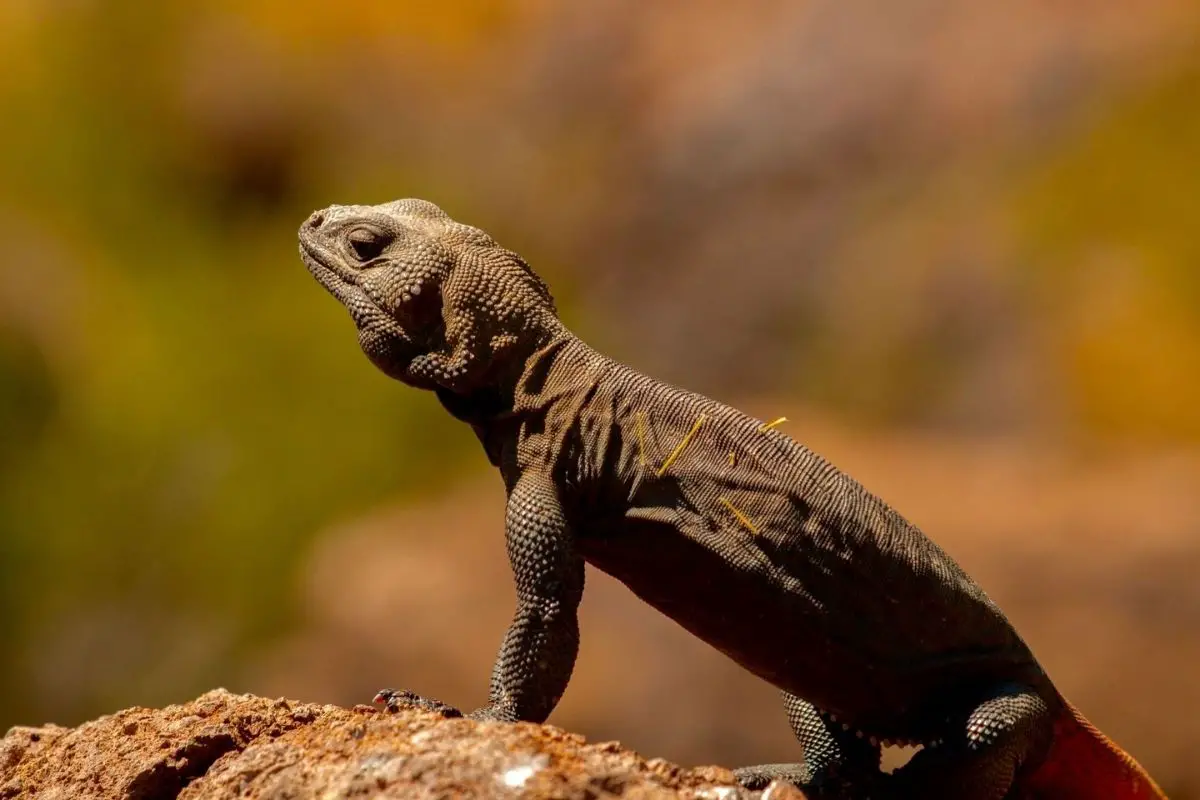
The Chuckwalla is a large, desert-dwelling lizard that is native to the southwestern United States and Mexico.
Where it lives:
The southwestern United States and Mexico
What it eats / how often it eats:
Leaves, fruits, and flowers / Once a day after basking in the sun for an hour.
How it gets food:
Chuckwallas use their sharp claws to tear open plants so they can eat the leaves, fruits, and flowers inside.
How long it lives:
40 years
Sleep behavior:
Chuckwallas are diurnal.
Types of homes it has:
Chuckwallas live in dry environments such as deserts and rocky areas.
Nomadic vs. territorial:
Chuckwallas are territorial lizards.
Fun Fact:
When Chuckwallas are threatened, they will sometimes inflate their lungs, so they look bigger and more intimidating to the predator.
8. Cuban Anole
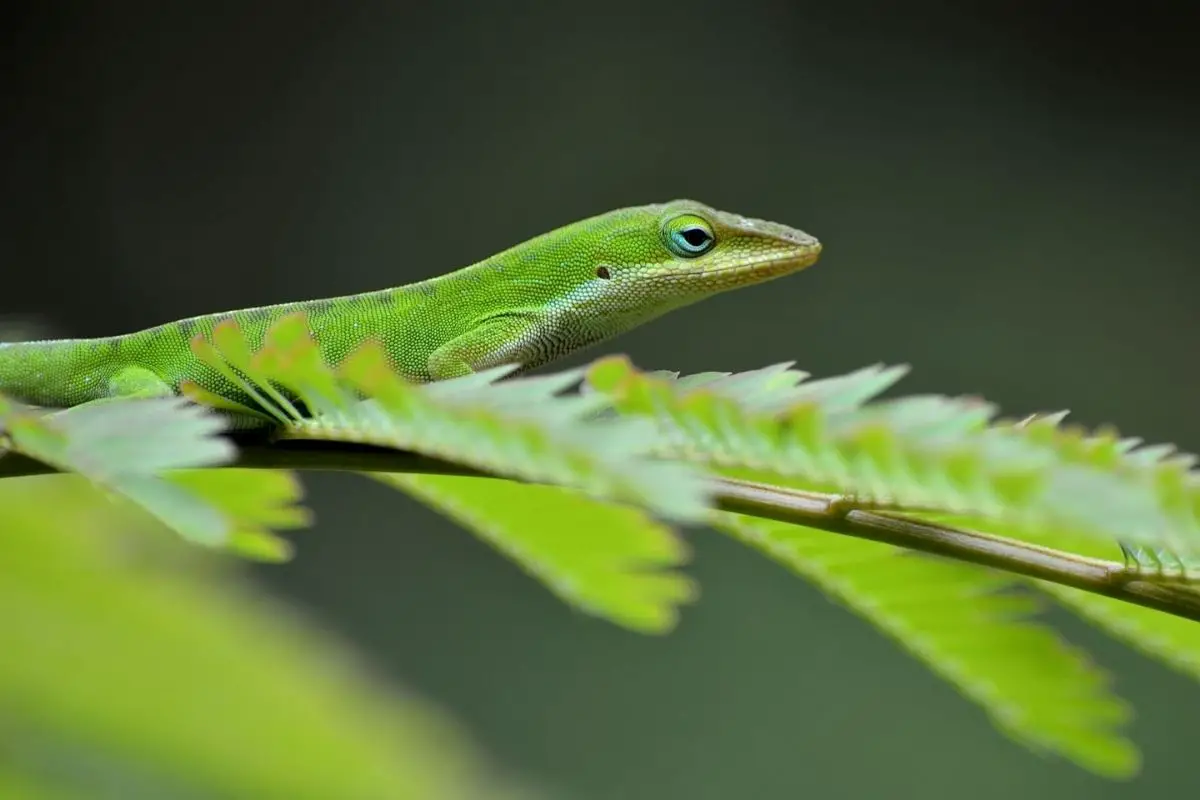
The Cuban Anole is a small, tree-dwelling lizard that is native to Cuba. These lizards only grow to be about 4 inches in length and are one of the most popular pet lizards in the world. They are insectivores and eat a diet of insects, spiders, and other small invertebrates.
Where it lives:
Cuba
What it eats / how often it eats:
Insects, spiders, and other small invertebrates / 2-3 times a week
How it gets food:
Cuban anoles use their long tongues to catch and eat insects, spiders, and other small invertebrates. They also lick their food off of plants and trees.
How long it lives:
5 – 8 years
Sleep behavior:
Cuban anoles are diurnal, meaning they spend the night in burrows or hiding places and come out to hunt for food once the sun comes up.
Types of homes it has:
Cuban anoles live in warm environments such as rainforests and tropical areas.
Nomadic vs. territorial:
Cuban anoles are territorial.
Fun Fact:
When Cuban anoles are threatened, they will sometimes drop from the trees they are perched in and play dead until the predator goes away.
9. Day Gecko
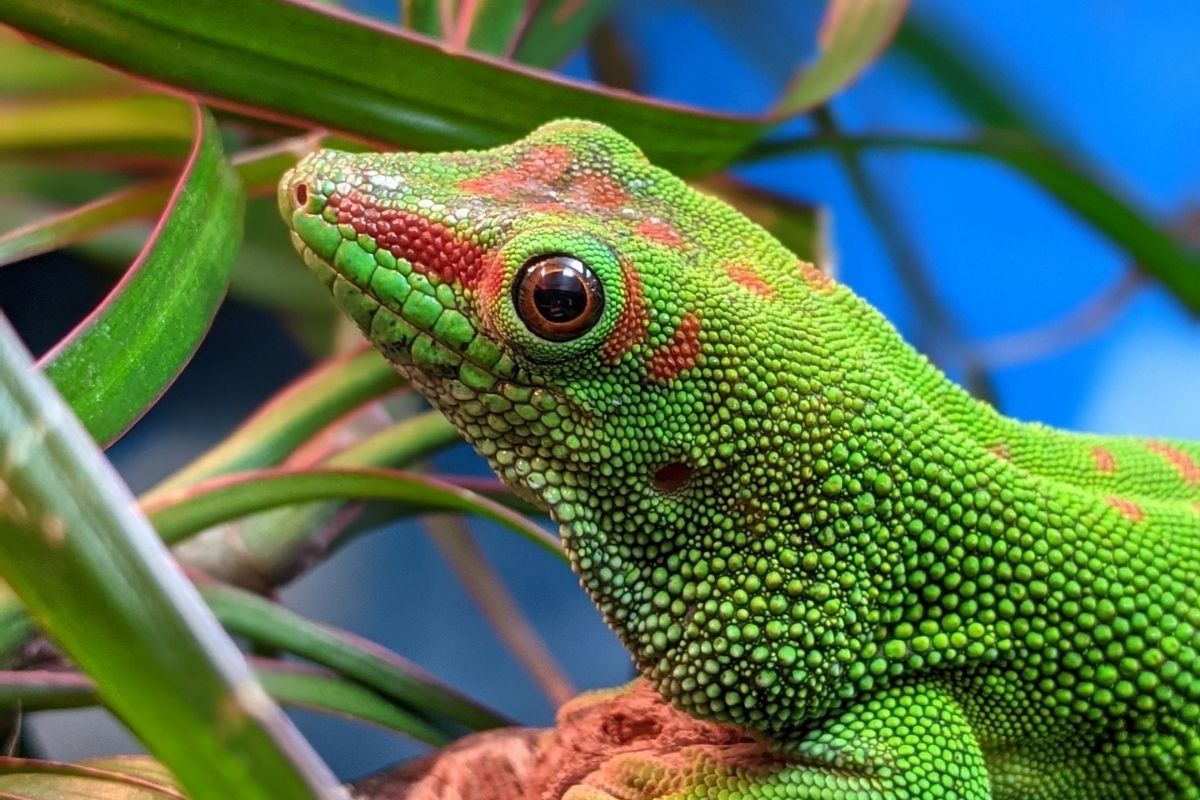
The Day Gecko is a small, tree-dwelling lizard that is native to Madagascar. These lizards only grow to be about 6 inches in length and are one of the most popular pet lizards in the world. They are insectivores and eat a diet of insects, spiders, and other small invertebrates.
They will also occasionally eat fruits, but less frequently than insects. In a pinch, they will also eat other lizards.
Where it lives:
Madagascar
What it eats / how often it eats:
Insects, spiders, and other small invertebrates / 2-3 times a week
How it gets food:
Day geckos use their long tongues to catch and eat insects, spiders, and other small invertebrates. They also lick their food off of plants and trees.
How long it lives:
5 – 15 years
Sleep behavior:
Day geckos are diurnal.
Types of homes it has:
Day geckos live in warm environments such as rainforests and tropical areas.
Nomadic vs. territorial:
Day geckos are not very nomadic.
Fun Fact:
Geckos are known for producing a range of sounds from squeaks, barks, croaks, and even hisses and clicks.
10. Frilled Lizard
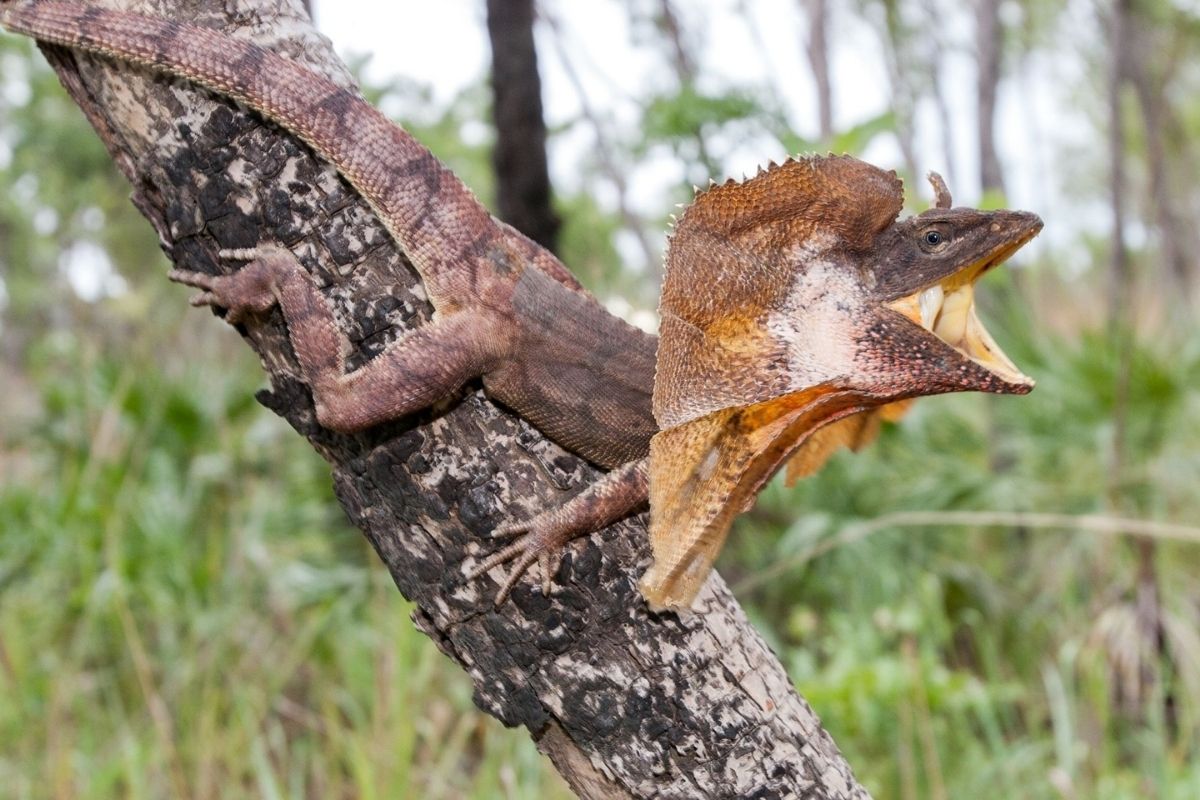
The Frilled Lizard – also known as a Frilled Dragon – is a large, tree-dwelling lizard that is native to Australia and Indonesia. Frilled lizards can grow up to 3 feet in length and are known for their frilled necks, which they use to intimidate predators. They are carnivores and primarily eat insects but will also eat small mammals and birds.
Where it lives:
Australia and Indonesia
What it eats / how often it eats:
Insects, small mammals, and birds / 2-3 times a week
How it gets food:
Frilled lizards use their long tongues to catch and eat insects, spiders, birds, and other small animals. They also occasionally hunt in trees for food.
How long it lives:
5 – 8 years
Sleep behavior:
Frilled lizards are diurnal reptiles.
Types of homes it has:
Frilled lizards live in warm environments such as rainforests and tropical areas.
Nomadic vs. territorial:
Frilled lizards are territorial.
Fun Fact:
When frilled lizards are threatened, they will sometimes open their frills and hiss at predators to intimidate them. If that doesn’t work, they will run away and try to hide.
Conclusion
The 10 types of lizards on this list all have a few things in common. They are all native to warm environments, and they are instinctively territorial creatures. However, each lizard has its own unique set of characteristics that make it special.
Hopefully, this article has helped you learn a little bit more about these amazing creatures! If you would like to learn more about all the different types of lizards, shoot us a message or leave a comment to start a conversation with your fellow lizard lovers!
Happy learning!



